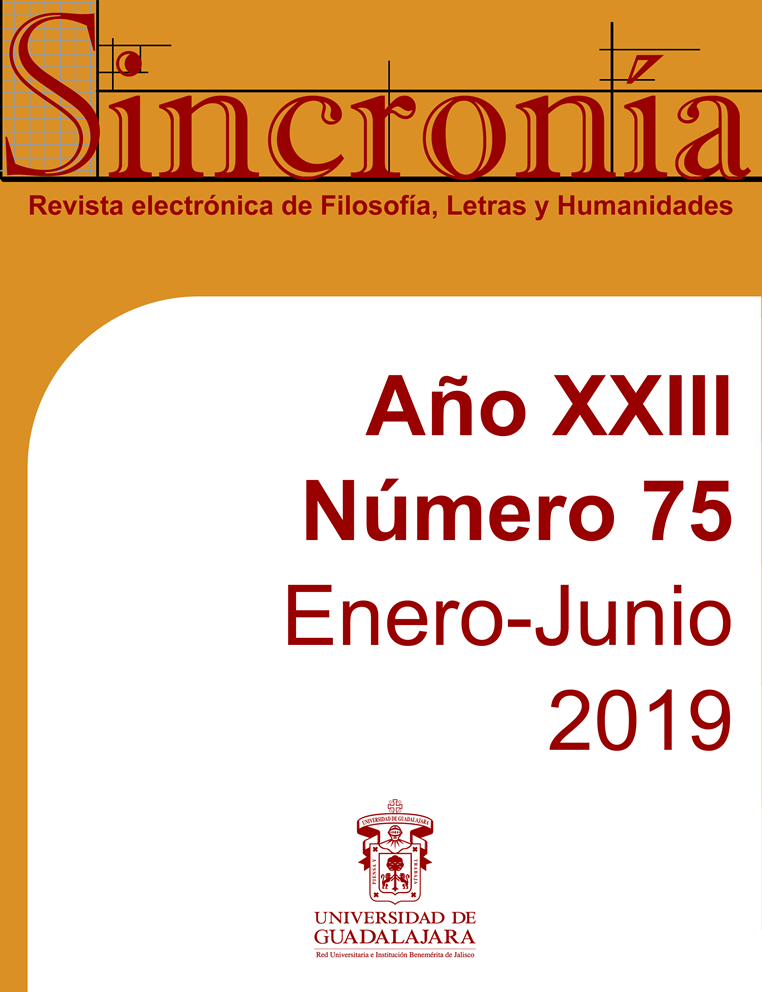Love and suffering, an analysis of a poem by María Enriqueta Camarillo
Keywords:
Structure., Thematic unit, Opposition., Lexical field, Rhythm.Abstract
In this article we analyze the structure, thematic organization, tropes and figures, dualities and oppositions, climatic structure and rhythm, rhyme and meter of the poem Tornó mi dolor by the Mexican writer María Enriqueta Camarillo in order to demostrate that this writer presents in its creation an organized structure product of a rigorous planning and demostrates that the rhythm is the central modernist element that the author pretends to highlight. On the other hand, it is sought to make evident that all the elements analyzed are a resource to generate a complex structure to express a particular relationship between love and suffering and pain. The applied methodology is structuralist and allows to derive schematic models that synthesize the structures: thematic, climatic, temporal, lexical fields, rhythm, rhyme and metric.
Downloads
References
Contreras, R. (2000). Ni romántica ni modernista, mujer solamente: la poesía de Enriqueta Camarillo. Bulletin Hispanique, volumen 102 (1). Obtenida el 14 de octubre de 2018 de https://journals.openedition.org/bulletinhispanique/?lang=es.
Camarillo, M. E. (1984). “Tornó mi dolor”. En Poesía Mexicana del Siglo XIX. México: Editorial Diógenes.
Echenique, M. et al. (1997). El análisis textual. Comentario filológico, literario, lingüístico, sociolingüístico y crítico. España: Colegio de España.
Páez Vivanco (1988), “La lógica de los mundos posibles y el concepto de isotopía”. Obtenida el 15 de octubre de 2018 de https://cdigital.uv.mx/bitstream/handle/123456789/6340/198820P73.pdf?sequence=2&isAllowed=y
Robles, M. (1986) La sombra fugitiva, escritoras en la cultura nacional. México: UNAM.
Downloads
Published
How to Cite
Issue
Section
License
Copyright (c) 2019 Carmina Alejandra García Serrano y Irma Angélica Bañuelos Ávila

This work is licensed under a Creative Commons Attribution-NonCommercial 4.0 International License.
You are free to:
- Share — copy and redistribute the material in any medium or format
- Adapt — remix, transform, and build upon the material
- The licensor cannot revoke these freedoms as long as you follow the license terms.
Under the following terms:
- Attribution — You must give appropriate credit , provide a link to the license, and indicate if changes were made . You may do so in any reasonable manner, but not in any way that suggests the licensor endorses you or your use.
- NonCommercial — You may not use the material for commercial purposes .
- No additional restrictions — You may not apply legal terms or technological measures that legally restrict others from doing anything the license permits.




























